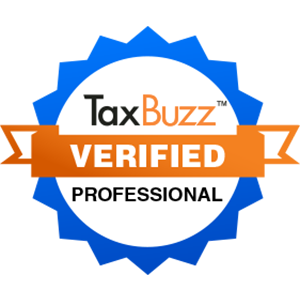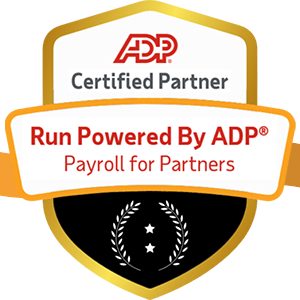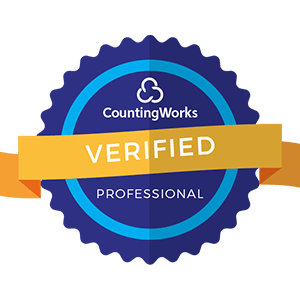
Picture this: You're running a thriving business with employees spread across multiple states. It's exciting, right? But then comes payday, and suddenly you're drowning in a sea of different tax rates, labor laws, and reporting requirements. Welcome to the wild world of multi-state payroll compliance – where one size definitely does not fit all, and the rules seem to change faster than you can say "direct deposit."
But don't panic! We're about to embark on a journey through the payroll compliance maze, armed with expert tips, clever strategies, and maybe a few dad jokes to keep things light (because let's face it, payroll can be about as exciting as watching paint dry). By the end of this guide, you'll be ready to tackle multi-state payroll like a pro, keeping your business compliant, your employees happy, and your stress levels in check.
.jpg?width=2880&height=1458&name=Why%20Multi-State%20Payroll%20Compliance%20Matters%20(And%20Why%20Its%20Trickier%20Than%20You%20Think).jpg)
Let's start with a reality check: getting payroll right isn't just about making sure the numbers add up. It's about navigating a complex web of federal, state, and sometimes even local regulations. And when you're dealing with multiple states? Well, that's when things get really interesting.
Here's why multi-state payroll compliance is such a big deal:
The multi-state twist: Each state has its own unique set of payroll laws and regulations. What's perfectly compliant in California might be a big no-no in New York. And don't even get us started on local jurisdictions with their own rules!
Feeling overwhelmed? Take a deep breath. We're about to break down multi-state payroll compliance into a manageable framework. Think of it as your GPS through the compliance wilderness:
First things first: you need to know exactly where your employees are located and which laws apply to them.
Key action items:
Pro tip: Use a color-coded spreadsheet or map to visualize your multi-state workforce. It'll make your life so much easier!
Some payroll compliance elements are universal. Get these right, and you're off to a strong start.
Key areas to focus on:
Remember: Even though these are federal requirements, states may have their own versions with stricter rules.
Here's where things get spicy. Each state has its own flavor of payroll regulations.
Key areas to research for each state:
Mindset shift: Instead of seeing this as a burden, think of it as a chance to become a payroll polyglot – fluent in the language of multiple state regulations!
Just when you thought you had it all figured out, some cities and counties throw their own rules into the mix.
Examples of local payroll laws:
Strategy tip: Create a hierarchy of laws (federal > state > local) to help you navigate conflicts between different jurisdictions.
The only constant in payroll compliance is change. Laws and regulations are always evolving.
Key strategies:
Mantra to live by: "Stay curious, stay compliant." Embrace a mindset of continuous learning!
Managing multi-state payroll compliance manually is like trying to juggle while riding a unicycle. Blindfolded. You need the right tools and processes.
Essential elements:
Game-changing idea: Create a "compliance calendar" that alerts you to important deadlines and changes across all your operating states.
Payroll compliance isn't just an HR or finance thing – it affects everyone in your organization.
Key actions:
Mindset matters: Foster a culture of compliance where everyone understands its importance.

Now that we've got our framework in place, let's stock our toolkit with some essential resources:
Create a quick reference guide for each state where you have employees. Include:
Pro tip: Use a digital tool like Notion or Airtable to create an easily updatable database.
As mentioned earlier, a compliance calendar is your best friend in the multi-state payroll world. Key dates to include:
Make it work for you: Set up automated reminders so you never miss a crucial deadline.
Develop a comprehensive payroll policy template that can be customized for each state. Include sections on:
Best practice: Have your legal team review the template to ensure it covers all bases.
In today's world of remote work, keeping track of where your employees are located is crucial. Create a system to:
Tech tip: Many HRIS systems now offer location tracking features. Investigate if your current system has this capability.
Regular self-audits can help you catch and correct issues before they become problems. Your audit checklist should cover:
Make it manageable: Break your audit into smaller, monthly checks rather than one massive annual review.
Now that we've got the basics covered, let's dive into some of the most challenging aspects of multi-state payroll compliance:
"Nexus" is a fancy way of saying your business has a presence in a state that's significant enough to trigger tax obligations. But it's not always clear-cut.
Potential nexus triggers:
The compliance challenge: You might need to comply with a state's payroll laws even if you don't have a traditional office there.
Pro tip: Consult with a tax professional to determine your nexus obligations, especially if you have remote workers in multiple states.
The rise of remote work has added a whole new layer of complexity to multi-state payroll compliance.
Key considerations:
Emerging best practice: Develop a clear remote work policy that addresses these issues and requires employees to report any changes in their work location.
Overtime seems simple on the surface (time and a half for hours worked over 40 in a week, right?). But some states have their own overtime laws that are more generous than federal requirements.
Examples of state overtime quirks:
The compliance challenge: You need to apply the law that's most beneficial to the employee, which might mean juggling multiple overtime calculations.
Sanity-saving strategy: Invest in payroll software that can handle complex overtime calculations across multiple states.
Paid leave laws are a rapidly evolving area of payroll compliance, with states and even some cities implementing their own requirements.
Types of paid leave to watch for:
The compliance challenge: Keeping track of different accrual rates, usage rules, and carryover policies across states.
Organizational hack: Create a paid leave matrix that clearly outlines the requirements for each state where you have employees.

As we wrap up our journey through the multi-state payroll compliance landscape, let's look ahead to some emerging trends:
With federal regulations often slow to change, states are taking the lead on many payroll-related issues.
Areas to watch:
Stay ahead: Keep an eye on proposed legislation in your operating states, not just enacted laws.
Artificial intelligence and machine learning are starting to make waves in the payroll compliance world.
Potential applications:
Future-proof your processes: Stay open to new technologies that can streamline your compliance efforts.
There's a growing push for more transparency around pay and benefits.
Emerging requirements:
Proactive step: Even if not required by law, consider implementing greater pay transparency as a best practice.
As more workers participate in the gig economy, states are grappling with how to classify and protect these workers.
Potential changes:
Stay flexible: Be prepared to adapt your payroll processes to accommodate new types of worker classifications.
Ready to conquer the multi-state payroll compliance challenge? Here's your action plan:
Remember, mastering multi-state payroll compliance is a journey, not a destination. Laws and regulations will continue to evolve, and your business will grow and change. Embrace a mindset of continuous learning and adaptation.
The bottom line: While multi-state payroll compliance can seem daunting, it's absolutely manageable with the right approach, tools, and mindset. By staying informed, leveraging technology, and fostering a culture of compliance, you can turn this challenge into a competitive advantage. Your employees will appreciate the accuracy and care you put into their payroll, and you'll sleep better at night knowing you're on top of your compliance game.
So, are you ready to become a multi-state payroll compliance superhero? Your cape (and your perfectly compliant payroll) awaits!


